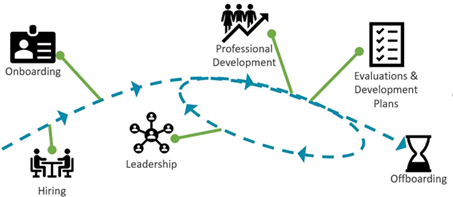Once Upon a Time at HP&D
In 2018, Hood Patterson & Dewar (HP&D) was struggling with the same concerns many companies encounter as they expand: how do you retain the culture that made you a success while transferring knowledge to new employees? Our leaders realized we needed a comprehensive employee development program to address these concerns, but they were unsure how to start. They decided to bring in a dedicated employee who could focus on creating a formal employee development program while allowing the billable employees to stay focused on client satisfaction. Happily, I was hired to do just that.
Employee development programs have numerous benefits for a company’s stakeholders including job candidates and current employees. According to a 2020 LinkedIn report, 94% of employees say they would stay at a company longer if it invested in their learning and development (LinkedIn Learning Report, 2020), and according to the “Future of Work and Employee Learning” report from Sitel, 79% of employees say it is important to them that prospective employers offer formal training programs. These are powerful statistics since employee recruitment and retention are vital in our industry, especially with labor shortages and the retirement of experienced workers.
Where to Start?
The first step in creating an employee development program is determining the type of program needed. There are three types of employee development programs: one-size-fits-all, custom, and hybrid. While each type has pros and cons, a hybrid program works best for most companies as you can use canned approaches where appropriate and customized solutions where required. HP&D’s unique organizational structure and considerable amount of traveling employees led us to determine that a hybrid approach was the best option for us. This approach allowed us to tailor our program to provide opportunities for our highly technical employees, while also using pre-developed elements for some of our more general leadership and onboarding training classes.
To create a customized employee development program, we completed a needs analysis that included interviewing a representative sample of the different teams and departments within our organization to identify our distinctive needs. This process took about a month to complete and included interviewing about 30% of the total employee population.
Once I compiled and analyzed all the data from these interviews, I created a plan for our employee development program that provides our new employees with the support they need to achieve success during the onboarding process while also supporting current employees as they grow professionally.
Our Program: The Employee Journey
In 2019, we created our employee development program, titled “The Employee Journey,” specifically to meet the needs of our people and to provide them with the support they need to continue to grow and develop their technical, leadership, and other soft skills. We provide our employees with flexible avenues with both online and in-person training. Employee development is a long-term initiative, but it also leads to short-term benefits, such as increased loyalty and improved performance and engagement. We focus on making growth a priority because growth compounds and accelerates as you remain intentional about it.
The components of our employee development program span the employee’s entire journey from hiring to retiring and everything in between. These include:
How Do You Implement It?
Starting an employment development program requires buy-in and ongoing support from all levels of management. The process can be time-consuming, and it has a price tag. A phased approach helps make the implementation more manageable and cost-effective. Flexibility is also a key to success.
At HP&D, we used a phased approach to prioritize what was most crucial to launch immediately and determine what could be introduced later. By following a phased approach, we could focus on specific tasks, develop an execution plan, and move to the next priority. This allowed us to achieve immediate and visible success, resulting in additional buy-in and support.
Throughout this process, it is vital to evaluate success and continually adapt as needed. These touch points have allowed us to stay connected to our employees, which allows us to remain aware of their needs and adjust as necessary when those needs change.
Lessons Learned
We have completed the initial implementation of our employee development program and have achieved positive feedback from our employees regarding what we have produced for them. This period has been filled with opportunities to improve and refine our program, allowing it to grow organically and meet the evolving needs of our people. We have learned quite a few lessons that can be applied to other organizations embarking upon a similar journey, including:
- Be flexible! Your business needs can change very quickly. (I’m looking at you, COVID)
- Differentiate your program for various teams or groups so that you are meeting them wherever they are.
- Ensure buy-in of senior leaders and seek champions across the company; as time progresses, identify slow adopters and strive to get them onboard.
- Communicate, communicate, communicate!
- Don’t wait to get started.
- Be prepared to talk to people – a lot!
Start Now!
The business case for a well-executed employee development program is only getting stronger. According to Axonify , 93% of employees said that well-planned employee training programs positively affect their level of engagement. As skilled construction industry labor shortages and strong competition for the best employees continue, give your company a key advantage: satisfied employees create better outcomes for you and your clients.





